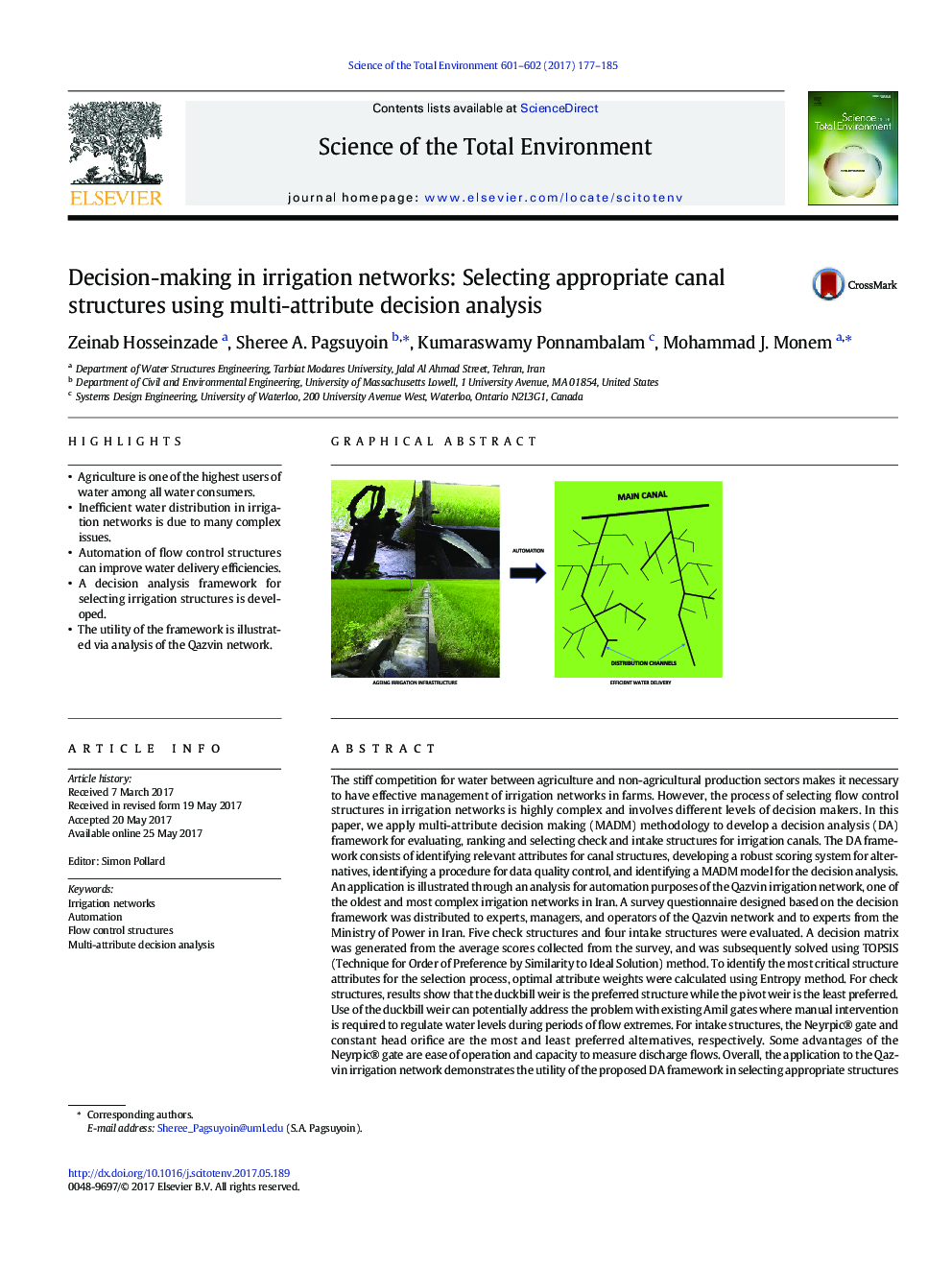| Article ID | Journal | Published Year | Pages | File Type |
|---|---|---|---|---|
| 5750375 | Science of The Total Environment | 2017 | 9 Pages |
â¢Agriculture is one of the highest users of water among all water consumers.â¢Inefficient water distribution in irrigation networks is due to many complex issues.â¢Automation of flow control structures can improve water delivery efficiencies.â¢A decision analysis framework for selecting irrigation structures is developed.â¢The utility of the framework is illustrated via analysis of the Qazvin network.
The stiff competition for water between agriculture and non-agricultural production sectors makes it necessary to have effective management of irrigation networks in farms. However, the process of selecting flow control structures in irrigation networks is highly complex and involves different levels of decision makers. In this paper, we apply multi-attribute decision making (MADM) methodology to develop a decision analysis (DA) framework for evaluating, ranking and selecting check and intake structures for irrigation canals. The DA framework consists of identifying relevant attributes for canal structures, developing a robust scoring system for alternatives, identifying a procedure for data quality control, and identifying a MADM model for the decision analysis. An application is illustrated through an analysis for automation purposes of the Qazvin irrigation network, one of the oldest and most complex irrigation networks in Iran. A survey questionnaire designed based on the decision framework was distributed to experts, managers, and operators of the Qazvin network and to experts from the Ministry of Power in Iran. Five check structures and four intake structures were evaluated. A decision matrix was generated from the average scores collected from the survey, and was subsequently solved using TOPSIS (Technique for Order of Preference by Similarity to Ideal Solution) method. To identify the most critical structure attributes for the selection process, optimal attribute weights were calculated using Entropy method. For check structures, results show that the duckbill weir is the preferred structure while the pivot weir is the least preferred. Use of the duckbill weir can potentially address the problem with existing Amil gates where manual intervention is required to regulate water levels during periods of flow extremes. For intake structures, the Neyrpic® gate and constant head orifice are the most and least preferred alternatives, respectively. Some advantages of the Neyrpic® gate are ease of operation and capacity to measure discharge flows. Overall, the application to the Qazvin irrigation network demonstrates the utility of the proposed DA framework in selecting appropriate structures for regulating water flows in irrigation canals. This framework systematically aids the decision process by capturing decisions made at various levels (individual farmers to high-level management). It can be applied to other cases where a new irrigation network is being designed, or where changes in irrigation structures need to be identified to improve flow control in existing networks.
Graphical abstractDownload high-res image (401KB)Download full-size image
